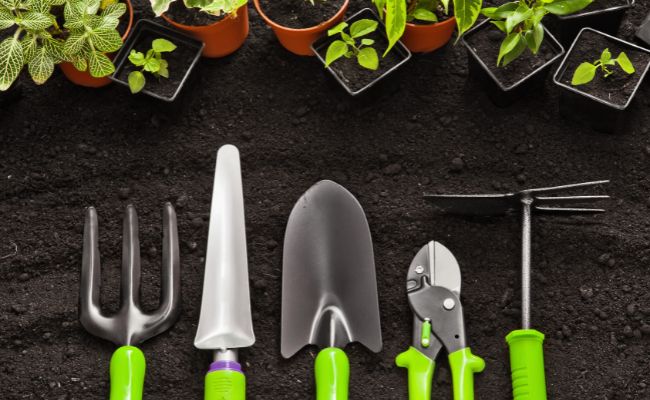Compost Your Espresso Grounds | Gardener’s Provide
 Subsequent time you order a latte at your favourite espresso store, ask in the event that they save the grounds from all of the espresso they brew.
Subsequent time you order a latte at your favourite espresso store, ask in the event that they save the grounds from all of the espresso they brew.Once I go to my native espresso store, I usually come out with greater than a cup of espresso. Close to the door, they’ve a bin with free luggage of used espresso grounds. Like most avid gardeners, I discover it not possible to withstand free meals for my backyard!
Within the spring, I unfold handfuls of espresso grounds round my acid-loving vegetation—azaleas, blueberries, rhododendrons. The grounds are barely acidic and apart from serving to to decrease the soil pH, they foster the humus-rich soil texture these vegetation actually love.
In late summer time and fall, I dig espresso grounds proper into the vegetable backyard after eradicating early-season crops comparable to peas and spinach. Within the winter, I add the grounds to my compost pile. They’re a great supply of nitrogen at a time of 12 months when that may be just a little tough to return by.
Causes to Compost Espresso Grounds
- Wealthy Supply of Nitrogen: Espresso grounds are an important supply of nitrogen, a necessary nutrient for plant development. When composted, they assist steadiness the carbon-to-nitrogen ratio in your compost pile, accelerating decomposition and enriching the soil with beneficial natural matter.
- Improves Soil Construction: Including composted espresso grounds to your backyard soil can enhance its texture. They improve drainage in heavy soils and improve water retention in sandy soils, selling more healthy root development and higher plant growth.
- Boosts Plant Vitamins: Composted espresso grounds comprise important minerals like potassium, phosphorus, and magnesium. These vitamins promote sturdy plant development, notably in greens like tomatoes, carrots, and leafy greens.
- Reduces Waste and Promotes Sustainability: By composting espresso grounds, you may scale back waste whereas creating nutrient-rich compost on your backyard. This eco-friendly observe helps divert waste from landfills and offers a sustainable solution to fertilize your vegetation naturally.
Pest Deterrent Properties of Espresso Grounds
Composted espresso grounds might be an efficient, pure solution to deter pests within the backyard. The grounds’ barely acidic nature and robust odor will help hold frequent backyard pests like slugs, snails, and ants at bay. When sprinkled round vegetation or included into the soil, composted espresso grounds create a barrier that many pests discover unappealing. The gritty texture additionally makes it tough for soft-bodied pests, like slugs and snails, to maneuver throughout, inflicting them to keep away from handled areas. Moreover, espresso grounds comprise compounds which will repel sure bugs, comparable to mosquitoes and fruit flies. By including composted espresso grounds to your backyard, you not solely enrich the soil but in addition naturally scale back the presence of undesirable pests, making a more healthy atmosphere on your vegetation.
Associated Studying
1. Composting and Espresso Grounds – Cornell College’s Soil Well being Weblog discusses the best way to incorporate spent espresso grounds into compost, highlighting advantages like nutrient enrichment for vegetation. https://blogs.cornell.edu/soilnow/espresso/composting-and-coffee-grounds/
2. Used Appropriately, Espresso Grounds Enhance Soil and Kill Slugs – Oregon State College Extension explains the best way to use espresso grounds in gardening, together with their results on soil and plant development. https://extension.oregonstate.edu/information/used-appropriately-coffee-grounds-improve-soil-kill-slugs
Browns & Greens
Environment friendly composting relies upon upon a well-balanced mixture of substances, which typically fall into two classes: browns (excessive carbon), and greens (excessive nitrogen). The checklist beneath offers examples of each sorts of substances. The best ratio is 25:1 (brown to inexperienced) however most individuals discover three components brown and one half inexperienced works fairly properly. Keep in mind to layer your substances, hold the pile moist (like a well-wrung sponge) and switch it often to include a recent provide of oxygen for the microbes.
Compost Components
Browns (3 components)
- corncobs and cornstalks
- paper
- pine needles
- dry leaves
- sawdust
- wooden shavings
- straw
- woody vegetable stalks
Greens (1 half)
- coir
- espresso grounds
- eggshells
- fruit trimmings
- vegetable peels
- recent leaves
- grass clippings
- feathers
- hair
- seaweed
- recent weeds
- rotted manure
- alfalfa meal
Get the Dust
Keep updated on new articles and recommendation. Please fill out the knowledge beneath.






